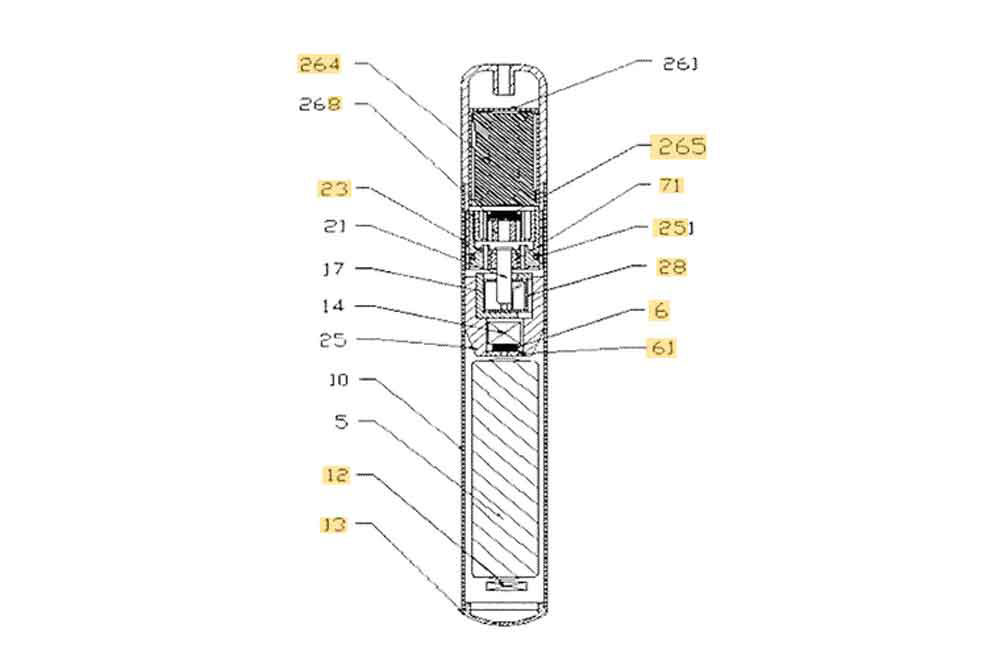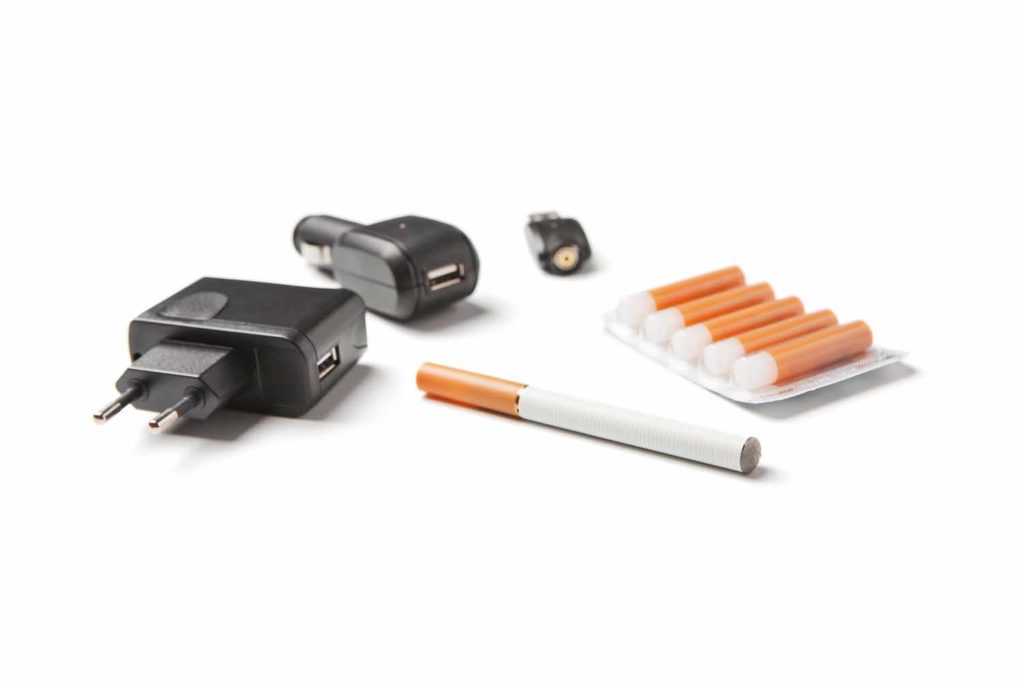
How free-flowing data streams can help advance public health goals for nicotine products.
By Cheryl K. Olson
How might new technologies engage public health in transforming the tobacco sector? Let’s take a look at three unlikely scientific bedfellows: sewage, Covid-19 and smoking harm reduction.
Of the many innovations born from the Covid-19 pandemic, my favorite is the U.S. Centers for Disease Control and Prevention’s National Wastewater Surveillance System (NWSS). Since September 2020, the NWSS has tapped into underused data streams flowing through our communities to get early warnings of local disease spread. It’s not perfect; you can’t predict how many people are sick, and it misses people not hooked up to municipal collection systems. But the information is there for the taking. It doesn’t depend on persuading people to show up and get tested.
The smoking harm reduction parallel? Technology innovations can also help advance public health goals for nicotine products using the less malodorous but equally free-flowing data streams of search engines and social media. This is information people have already provided, with no need to persuade them to fill out surveys or file a report. We can systematically search those streams to look for evidence of product adverse experiences or youth misuse of tobacco products or to hunt for and counteract nicotine misinformation.
I found a guide to some of these new methods in sociologist Navin Kumar, a postdoctoral associate at the Yale School of Medicine. He uses techniques like social computing, machine learning and natural language analysis to promote health, including tobacco harm reduction.
Countering Misinformation
Kumar’s research group has done several studies looking at how new technologies can identify and potentially counter health misinformation. As an example of how to study web-based narratives in tobacco control, the researchers tackled two controversial areas at once by mapping how misinformation spread about vaping (especially CBD from cannabis) to help treat Covid-19. This included collecting vaping-related text fragments from a wide range of web sources, including health provider forums, news articles and blogs as well as social media. They also generated word clouds (a fun and intuitive way to depict the most-used words) to see how the use of key terms changed before and after Covid-19 was reported to the World Health Organization. The results showed a shift from words related to vaping bans to positive mentions of CBD and CBD oil.
There are many challenges in applying these techniques to counter nicotine misinformation. For a start, we need to understand how people talk about nicotine products in online conversations as opposed to formal news reports. A study by Kumar and colleagues analyzed the framing of vaping in social media and how words used to describe vaping and their meanings shifted over time. In earlier years, “happy” and “wonderful” were among the most frequent words associated with vaping. From 2017 on, these gave way to words like “ban,” “lung” and “teen.” The study vividly illustrates (with those wonderful word clouds) the social media shift from seeing vaping as an alternative to cigarettes to viewing vaping as about harm and regulation like the news media did.
Another problem: It turns out it’s easier to get people to buy into twaddle than to stop them from doing so. Said Kumar, “People tend to believe new misinformation; it’s harder to remove misinformation such as ‘vaccines have microchips.’” One of Kumar’s recent studies was a randomized controlled trial to try to counter tobacco product misinformation. Results were promising, but the challenge is huge. How can a metaphorical cupful of accurate information received in a study counter the buckets of misinformation people get on a daily basis?
That’s why researchers such as Kumar are working on automated ways to detect misinformation on social media using machine learning. If responsible parties can detect the latest mutation in tobacco product misinformation as it emerges, “They could respond before it has a chance to take hold. And go to Facebook and other outlets to counteract it,” said Kumar.

Adverse Experiences
The goals of reporting are to identify safety risks, to share lessons learned so our mistakes are new instead of repeats of the past and to raise the cost to potential bad actors of disregarding customer safety. The U.S. Food and Drug Administration’s Center for Tobacco Products takes voluntary reports from anyone—including product users, researchers and health professionals—about “adverse experiences.” You can report a tobacco product concern through the FDA’s central safety reporting portal at www.safetyreporting.hhs.gov, which also takes reports about marketed human and animal drugs and biologics, foods and dietary supplements.
Traditional ways of reporting adverse experiences to the FDA leave a lot to be desired. Since the system is primarily voluntary, a busy human must find the time and motivation to report the problem. Under-reporting is assumed, but no one knows by how much or how reporting may differ by product, user or symptom type. Important details may be left out of the report, making it hard to spot patterns (or creating misleading patterns as in the case of e-cigarette or vaping use-associated lung injury (EVALI)). Reporting can also be biased by things like news reports and litigation. The blossoming variety of reduced-harm nicotine products further complicates finding and addressing safety issues when market shares are small and issues are infrequent.
If your company’s tobacco product gets a premarket tobacco product application (PMTA) marketing granted order from the FDA, postmarket reporting of adverse experiences is required as part of the deal. “Serious and unexpected” adverse experiences that companies are told about or discover must be reported through that FDA portal within 15 days. The FDA may also require other postmarket reporting to stay comfortable with keeping a new tobacco product on the market. It’s in your interest to avoid surprises.
This approach is still untested for tobacco products, but publications are proliferating using these methods. I ran across articles that used machine learning and natural language processing to monitor for adverse effects of Covid-19 vaccines on Twitter and for health risks from the mood-altering plant kratom on Reddit and Twitter.
As with our example of using wastewater to predict Covid-19 spread, Kumar notes that multiple data sources better predict outcomes. “So you can use reports on Twitter combined with YouTube and [the] news to predict adverse experiences,” he said. Look to computer science publications for the latest publications on nicotine products; they aren’t caught up in the tobacco harm reduction battles now raging in many public health journals.
How do These Tech Innovations Look to Public Health Authorities?
Are these promising innovations likely to percolate through into accepted practice? Will regulators look upon creative high-tech approaches with favor or scorn? To look for clues, I searched the abstracts (summaries) of studies accepted for the March 2022 meeting of the Society for Research on Nicotine and Tobacco (SRNT). (SRNT is not, at present, an industry-friendly organization and, therefore, is a useful gauge of sentiment among academics and regulators.) Over two dozen studies involved using social media data for research, most simply to gather information and look for patterns. Some involved lifting data from Reddit, Twitter or Instagram about descriptions or perceptions of particular tobacco products then using conventional qualitative methods (coding by human readers) to explore topics and feelings. Others used social network analysis to understand how information about products or policies spread.
Two studies supported the possibility of collecting adverse experiences through social media. One coded mentions of positive and negative health outcomes from vaping found on Twitter and Reddit. Another studied videos posted to the TikTok app (with hashtag #nicsick).
One study combined old and new methods by using an age detection algorithm with Reddit metadata to sort posted comments on vaping and then hand-reviewing the most popular posts by each age group. A nicotine product company could potentially use an age detection algorithm to show regulators that their social media accounts don’t attract youth.
Wearable sensors were used to detect smoking behavior as part of a smartphone-delivered smoking cessation program. Behavior studies documenting the transition from smoking to vaping might benefit from including wearable technologies. We might find, for example, that people who’ve completely transitioned to vaping have better sleep quality.
New technologies bring new potential but also novel problems. For example, social media has been hailed as a new cost-effective, efficient way to recruit subjects for research, especially hard-to-find subgroups. My research team did have some success recently using social media platforms, such as Facebook, to locate a particular “vulnerable population” for PMTA behavioral studies. However, it also attracted responses from scammers, automated survey bots and professional survey takers, which took a lot of time and creativity to block or identify and remove.

Forewarned is Forearmed

One example of using these advanced techniques to find early signals of both misinformation and potential health concerns is an e-cigarette or vaping use-associated lung injury (EVALI) monitoring and alerting platform developed by Skai (formerly Signals Analytics) for the Foundation for a Smoke-Free World.
As a proof of concept, the platform retrospectively analyzed and compared vaping-related content from social media and news sources. In social media comments about specific symptoms and vape ingredients, Skai’s platform spotted signals of the direct link between seizures and vaping synthetic CBD nearly a year before official reports appeared. This kind of early information, while not definitive, would allow public health authorities and the industry to respond quickly to prevent harm and provide corrective facts in appropriate language.
Disinformation on social media, from naive misunderstandings to deliberate manipulations, will be a fact of life for years to come. Taking advantage of these analytical techniques allows the industry to demonstrate socially responsible leadership in advancing public health. Why be blindsided by EVALI’s inevitable successor when there are tools to detect and respond to it? –Derek Yach
*https://skai.io/reports-and-whitepapers/early-detection-of-pandemics-and-outbreaks/?msclkid=4ac806b7a95011ecb5d22adb0bd2b48e











































